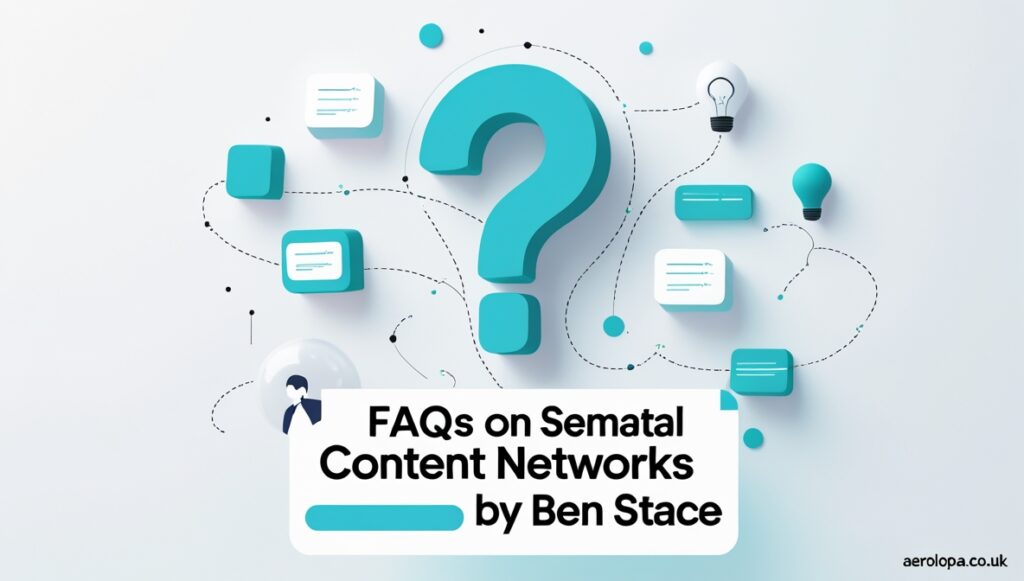Online presence in today’s digital environment is about more than just publishing a couple blog posts. Today’s success is contingent upon the organization of your content, the connectivity of your content, and your ability to demonstrate, clearly, your expertise. That is where semantic content networks by Ben Stace come in.
This approach has been a game-changer for website owners, companies, and content producers wanting to create excellent topical authority, establish trust from search engines, and show up regularly for the same queries. Rather than working against algorithms using quick-hit ideas, it creates sustainable frameworks of content intentionally made for growth.
What Are Semantic Content Networks by Ben Stace?

Semantic content networks by Ben Stace are structured systems of online content built to show depth, clarity, and authority around a specific topic.
Instead of publishing random articles that have no connection, this model organizes content into networks where every piece supports the others.
Think of it as building a digital library:
- The pillar pages act like the main bookshelves, covering broad subjects.
- The cluster articles fill the shelves with detailed subtopics.
- The internal links are the pathways guiding readers and search engines from one resource to the next.
When executed correctly, your site no longer looks like a scattered set of blog posts. It becomes an interconnected ecosystem that demonstrates deep expertise.
Why Semantic Content Networks by Ben Stace Matter
The internet is full of surface-level articles. Most cover keywords but lack depth, which makes it harder for search engines to trust them.
Semantic content networks by Ben Stace solve this problem by:
- Showing topical authority – Covering subjects from multiple angles signals you’re a credible source.
- Improving user experience – Readers find related content easily, staying longer on your site.
- Boosting rankings – Search engines reward structured, context-rich content.
- Future-proofing websites – AI-driven search depends more on context than just keywords.
This approach doesn’t just help you rank now — it helps you stay relevant as search evolves.
How Semantic Content Networks by Ben Stace Work
To visualize this strategy, imagine your website as a city:
- The city center = pillar content (broad, in-depth guides).
- The neighborhoods = cluster content (detailed supporting articles).
- The roads = internal links (connections between all areas).
When everything is linked together, visitors and search engines can explore the “city” effortlessly. The stronger the network, the more authority your site builds.
Benefits of Semantic Content Networks by Ben Stace
1. Higher Search Rankings
Search engines reward websites that demonstrate expertise and context. By organizing your content into a network, you cover every angle of a subject, making your site more trustworthy.
2. More Organic Traffic
Because you target broad topics as well as detailed subtopics, you naturally rank for both high-traffic keywords and long-tail queries.
3. Better Engagement
Readers can easily move from one article to another. Instead of bouncing after one page, they spend more time learning from you.
4. Increased Conversions
The more trust and authority you build, the easier it becomes to guide readers toward products, services, or sign-ups.
5. Resilience Against Algorithm Updates
Shortcuts like keyword stuffing fade over time. But structured, meaningful content networks stand strong through algorithm changes.
Building Semantic Content Networks by Ben Stace: Step by Step
Step 1: Choose Your Core Topic
Pick the subject you want to dominate. For example, if your business is in fitness, your core topic could be “weight loss strategies.”
Step 2: Create a Pillar Page
Write an in-depth guide that introduces the core topic. This should be detailed enough to give an overview but broad enough to allow expansion into subtopics.
Step 3: Build Cluster Articles
You’ll write supporting content on subtopics (for example, “best diets for weight loss,” “exercise regimens,” “sleep and metabolism,” and “mistakes to avoid”).
Step 4: Connect Everything Back Together
It is important to use natural internal linking to connect cluster articles to the pillar page and, when make sense, to each other.
Step 5: Keep It Fresh and Growing
Keep the content fresh by adding new data, responding to new questions and growing the content with new trends.
Common Mistakes to Avoid
mistakes can still derail your network, even with a good structure. Avoid:
- Publishing content without internal links.
- Targeting keywords but ignoring user intent.
- Overstuffing keywords instead of writing naturally.
- Letting pillar content get outdated.
- Creating content silos that don’t connect across your site.
Who Should Use Semantic Content Networks by Ben Stace?
This approach is useful across industries:
- Small businesses – Build authority locally and compete with larger brands.
- E-commerce sites – Rank for both product keywords and informational guides.
- Bloggers – Establish thought leadership in a chosen niche.
- Agencies – Deliver long-term SEO value to clients.
- Personal brands – Grow recognition and trust online.
FAQs on Semantic Content Networks by Ben Stace

Q1: What makes semantic content networks by Ben Stace different from traditional SEO?
They focus on building authority through connected topics, not just optimizing single posts for keywords.
Q2: How long before I see results?
Most sites see movement within 3–6 months, though competitive niches may take longer.
Q3: Can small websites benefit?
Absolutely. Small websites can outrank bigger competitors by being more structured and focused.
Q4: Do I need special tools?
No. While tools help with research, the key is strategy and consistency.
Final Thoughts
The online world is more competitive than ever, but success isn’t about chasing shortcuts. It’s about building systems that search engines respect and audiences love.
Semantic content networks by Ben Stace provide exactly that: a framework for sustainable rankings, trust, and authority. Whether you’re a small business owner, blogger, or enterprise, this approach can unlock long-term growth.
Instead of publishing content at random, start building a network. In time, you won’t just get traffic — you’ll build influence.




